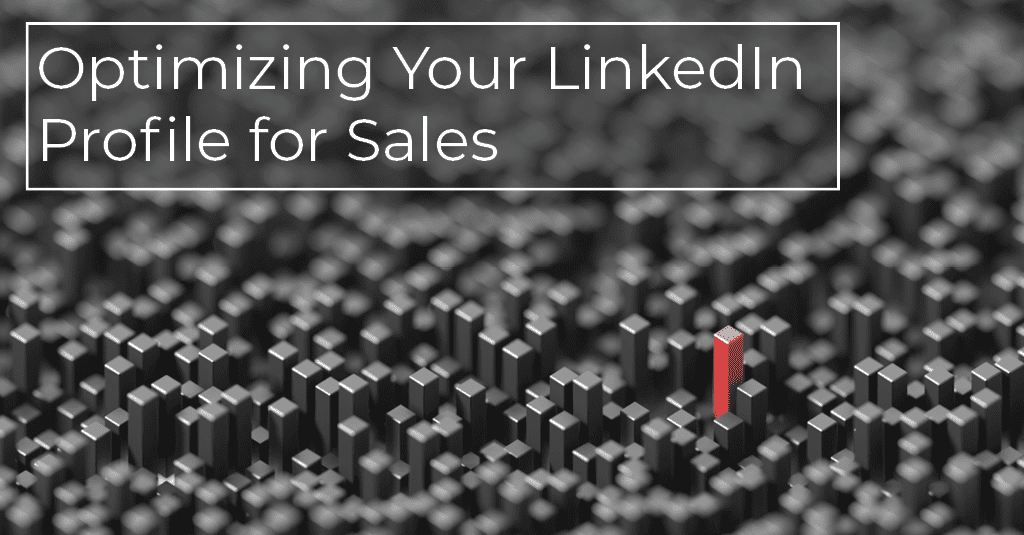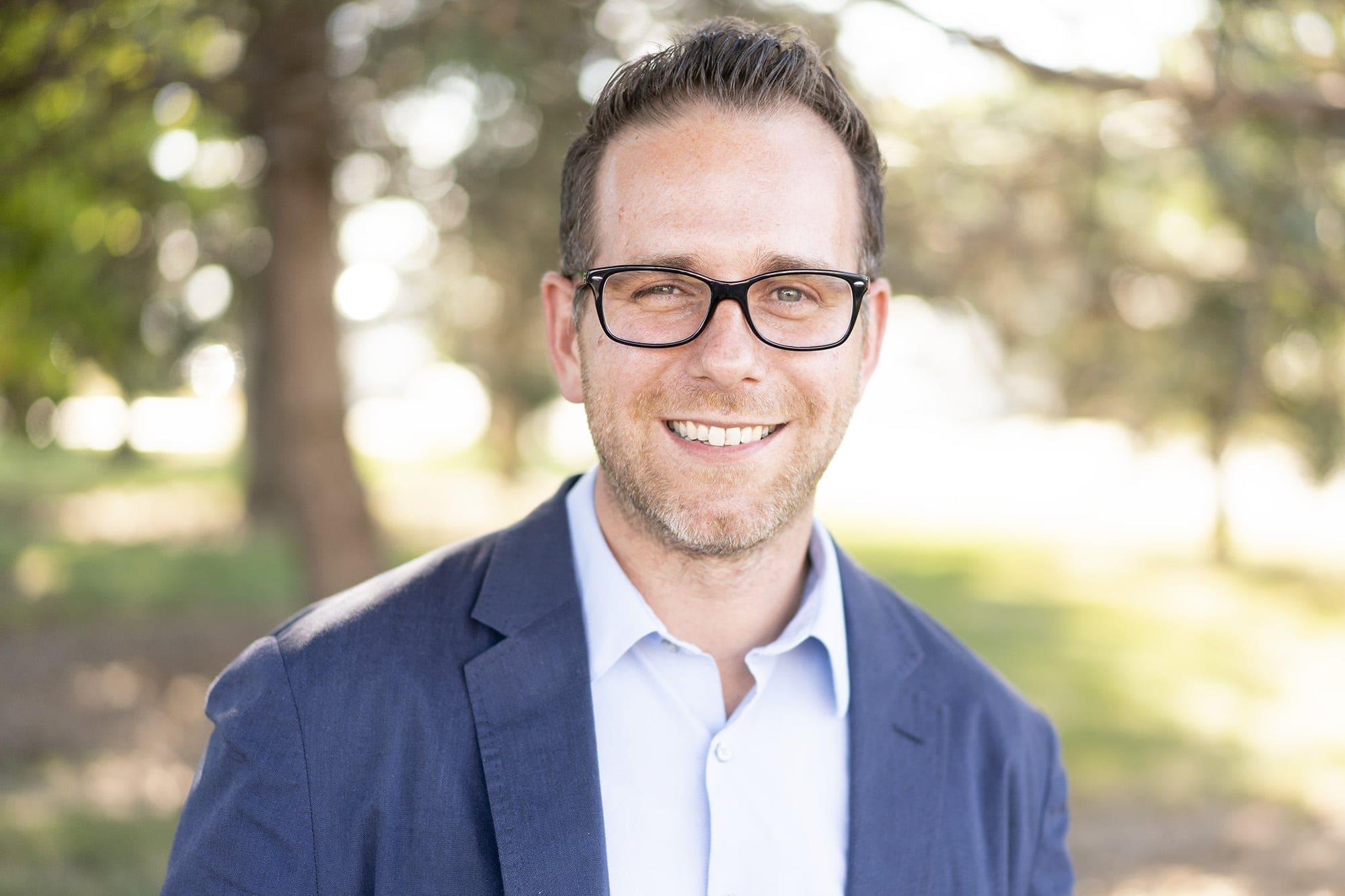
Optimizing Your LinkedIn Profile for Sales
Most people have a LinkedIn, but a lot of people don’t know LinkedIn can be a great opportunity for sales. By optimizing your profile you can make sales via LinkedIn a worthwhile endeavor. Growing your LinkedIn profile and optimizing it from a sales standpoint isn’t hard, we detail the basics below.
When you’re optimizing your LinkedIn profile for job hunting and for sales, there is a lot of overlap between the things you should fix. Most people you connect with look at your profile, and it should look good. If you have nothing on your profile, it looks blank like you don’t care. If they’re looking to do business with your company or buy from you, they might try to find someone else who looks like they put more work into it. Put in the effort and make your profile look good.
Your LinkedIn Profile Image
Almost everyone understands this one, so we won’t go too in-depth on taking a good picture. Your profile picture needs to be current, professional, and not too casual or weird. This isn’t Tinder or Facebook, so no pictures of you in coveralls holding a big fish, unless that’s your job. Even then, it wouldn’t hurt to stick to a button down shirt at a 3/4 angle.
Your LinkedIn Banner Image
The banner image is above your profile picture, taking up the whole ‘header’ of your profile. On mobile, it is smaller but still placed above your profile pic when people look at your profile. The banner image has more leeway than a profile picture, and can be less ‘professional’. You can put something pretty, like a sunset, or something you’re interested in, like skiing or mountain biking. If you do photography or design, put a picture you took or created.
We recommend making your banner image more personal, since it’s one of the few things people see when you connect with them. Showing something that’s not flat professional isn’t a bad thing, as long as it’s still reasonable. Don’t leave the banner image blank, you should have something there even if it’s not 100% perfect.
Your LinkedIn Headline
Your headline is the last of only a few things people see if they haven’t clicked onto your profile in full. It is the 120 characters or less you get to describe yourself, snd it sits directly your profile picture.
A lot of people put their job title and the company they work for. Don’t do this. If you send a connection request to someone, all they see is your profile picture, your banner image, and your headline. A headline saying ‘sales manager at ABC company’ doesn’t mean much to them, and they’re not likely to go to your profile to investigate.
Headlines that say ‘Teaching Companies About Marketing’ or ‘Leading the PCB Market’ make a bigger impact, as it lets them know why you want to connect with them. Be creative with your headline, make it true but also interesting. By putting something about what you do and the industries you work for, you make it clear why you want to connect and what they would get out of connecting with you.
Use all of the characters you’re given when writing your headline. This is important. There is always more you can say – if you’re in regional sales, put your region, if you’re also a freelance journalist, put that. Don’t leave any space open, since you have such little space as it is.
And again, seriously, don’t leave it blank. You’re not doing yourself any favors by leaving it blank.
Your LinkedIn Summary
For your LinkedIn summary, it can be tempting to leave it blank – a lot of people don’t like talking about themselves. Don’t leave it blank.
Summarize what you’re good at. If you’re in sales or marketing, put services, products, things you offer to other people. Make it clear and concise.
When you write your summary, don’t have big blocky paragraphs. Leave white space. Don’t be afraid to use bullets, lists, arrows, whatever it takes to spread the information out. You can have a longer summary, using the vertical space is perfectly fine. People don’t want to read things in big paragraphs, and they won’t. Let it breathe.
In your summary, you have the option to add in media. If you have any media to add, do so. If you’re in sales, add in brand collateral, things like that. If you’re in marketing or do anything creative, add in examples.
Your LinkedIn Job History
In your job history section, you have an opportunity to go into more detail about your past positions. You can talk about the awesome things you did for every position, and how you contributed to the company.
For the history, include every relevant position you have held. If it was recent, include it. For things like a job from 20 years ago at a company that doesn’t exist anymore, you don’t necessarily have to include it, but if you have no reason not to it’s better to err on the side of including it. Unless you have a reason not to include a particular position, you should include them.
In the job descriptions, write the things you did for the company. Add in your accomplishments. For a lot of people, it’s hard to describe what you did. One trick I know is to go back and see if you can find the job posting you originally applied to (if you applied to the position) and pull information from there, as it lists out the job functions.
When adding previous positions, make sure you add the correct companies. You should be linking to the company page, and pulling in the logo and description of the company. If you just type in the name and don’t click on the page to link to it, it makes your profile look strange. Sometimes companies call themselves different things on LinkedIn – you can find the real page before you edit your profile, to make sure you have the right one.
Like with the summary, don’t be afraid to use the vertical space. People don’t like reading chunky blocks of text, and they usually won’t. Use lists, bullet points, whatever makes it more visually interesting.
For each job, you can also add media. Anything you have to link to, do it. Make sure you’re adding things that look good, but otherwise go crazy. More media is usually good.
Your LinkedIn Customized URL
Your LinkedIn page URL can be changed, and you should change it if you haven’t yet.
If you haven’t edited your URL on LinkedIn, it will look like https://www.linkedin.com/in/firstname-lastname-b8516218/ . Usually your first name, your last name, and then a bunch of random letters and numbers. While there’s nothing inherently wrong with this, you should change it – it looks cleaner if it’s just your first and last name, or something talking to your specialty if you have a common name.
Nobody will look at your profile and notice the URL, if they’re on LinkedIn and browsing. Having a concise URL isn’t for browsing on LinkedIn, it’s for when you send the link to other people and post it online. Include your URL on every signature of every email you send: “Connect with me on LinkedIn – www.linkedin.com/in/firstname.lastname/”. It looks much better without the random letters and numbers.
It might not be possible to get just your first and last name, but do the best you can. If you’ve got an unfortunately common name, go with the shortest version you can that is still professional.
Take The SEO Basics and Do Something With Them
We threw a lot of information at you, and now it’s your turn. Take what we taught you and do something with it. Go over your company website and make sure you know what pages are driving at specific keywords and phrases. Do some research into what phrases you should aim at. Write content based on keywords google says get traffic.
Don’t procrastinate. Don’t talk yourself out of it. If your website isn’t doing everything it can to drive new business into your sales funnel, it needs to change. Do the best for your company and optimize your website so you have the best chance to get new customers coming to you.

Kyle Milan is a well accomplished Industrial/Manufacturing sales and marketing professional with over 20 years of experience. He is the CEO of MFG Tribe (Industrial Marketing Agency) and Technical Sales University (https://technicalsalesu.com) and is considered the leader of Sales and Marketing Strategy & Social Media Marketing for industrial companies. He has published several articles in major news media outlets on various topics of; Inbound Marketing, Digital Marketing, Social Media Marketing & Advertising, Industrial Marketing, Manufacturing Marketing, and Entrepreneurship.



